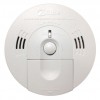There are certain issues that you don’t want to take lightly, and domestic carbon monoxide poisoning is one of them. CO is odorless and deadly. I once inspected an occupied basement apartment that had a boiler room covered with soot that was venting directly into the apartment. Not good. On Long Island, unfortunately, it seems that there is almost annual news of people dying from carbon monoxide poisoning. See here and here for two examples.
Recall of LI New Yorker Boilers
In 2014, there was a published recall of New Yorker boilers that had been installed on Long Island. “Plumbing Consultant Robert Gramman said thousands of the recalled boilers were installed as part of the KeySpan National Grid incentive program from 2005 to 2013.” – The New Yorker boilers, AKA Utica boilers, have, “an air-pressure switch that can fail, resulting in carbon monoxide poisoning.” I recently inspected a home with a New Yorker boiler, but it was manufactured in 1997. The following 2 websites help to identify the age of a New Yorker (Utica) boiler using the serial number:
http://www.buildingcenter.org/content/hvac-production-dateage
http://inspectbeforebuying.com/hrc/serialnumbers.asp
Recall of Kidde Smoke / CO Alarms
According to a published report, 1.2 million Kidde CO / smoke alarms manufactured between the dates of Dec. 18, 2013 and May 13, 2014 are being recalled. The defective alarms “may fail to sound during a fire or a CO incident.” If you have Kidde alarms that had been replaced beginning from December 2013, please check the manufacturing date and return them if the manufacturing date falls within the noted window of time.
Remember that just having smoke detectors in your home is not enough. And because each CO detector manufacturer has different installation instructions based on the specific design of the CO alarm unit, its important to read the instructions for the placement of your CO detectors.InterNACHI describes important facts on this subject in more detail. In New York State, the installation of CO detectors is also a code issue, as quoted from a law published in 2010:
“Specific reasons underlying the finding of necessity: Adoption of this rule on an emergency basis is required to preserve public safety by requir ing the installation of carbon monoxide alarms in all one- and two-family dwellings, townhouse dwellings, dwelling accommodations in buildings owned as condominiums or cooperatives, and multiple dwellings, without regard to the date of construction or sale of such buildings, as required by Amanda’s Law (Chapter 367 of the Laws of 2009), which will reduce the number of deaths and injuries caused by carbon monoxide poisoning and, in the words of the sponsor of the bill that became Amanda’s Law, “create safer homes for New Yorkers;”
Tags: preventing carbon monoxide poisoning, carbon monoxide poisoning on Long Island, Consumer Product Safety Commission, placement of CO detectors and alarms, locations of CO alarms, recalls of hazardous boilers, recalls of hazardous CO alarms, Amanda’s Law CO alarms NY
